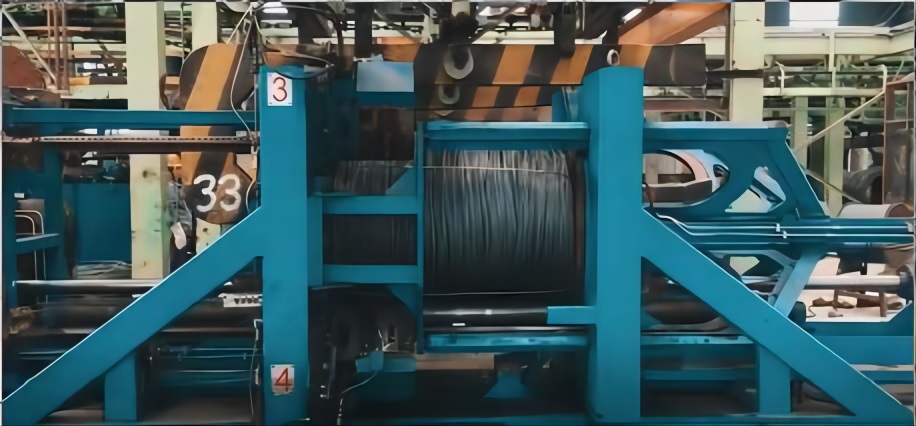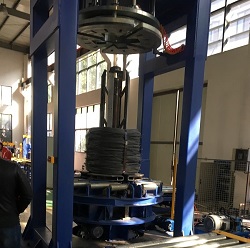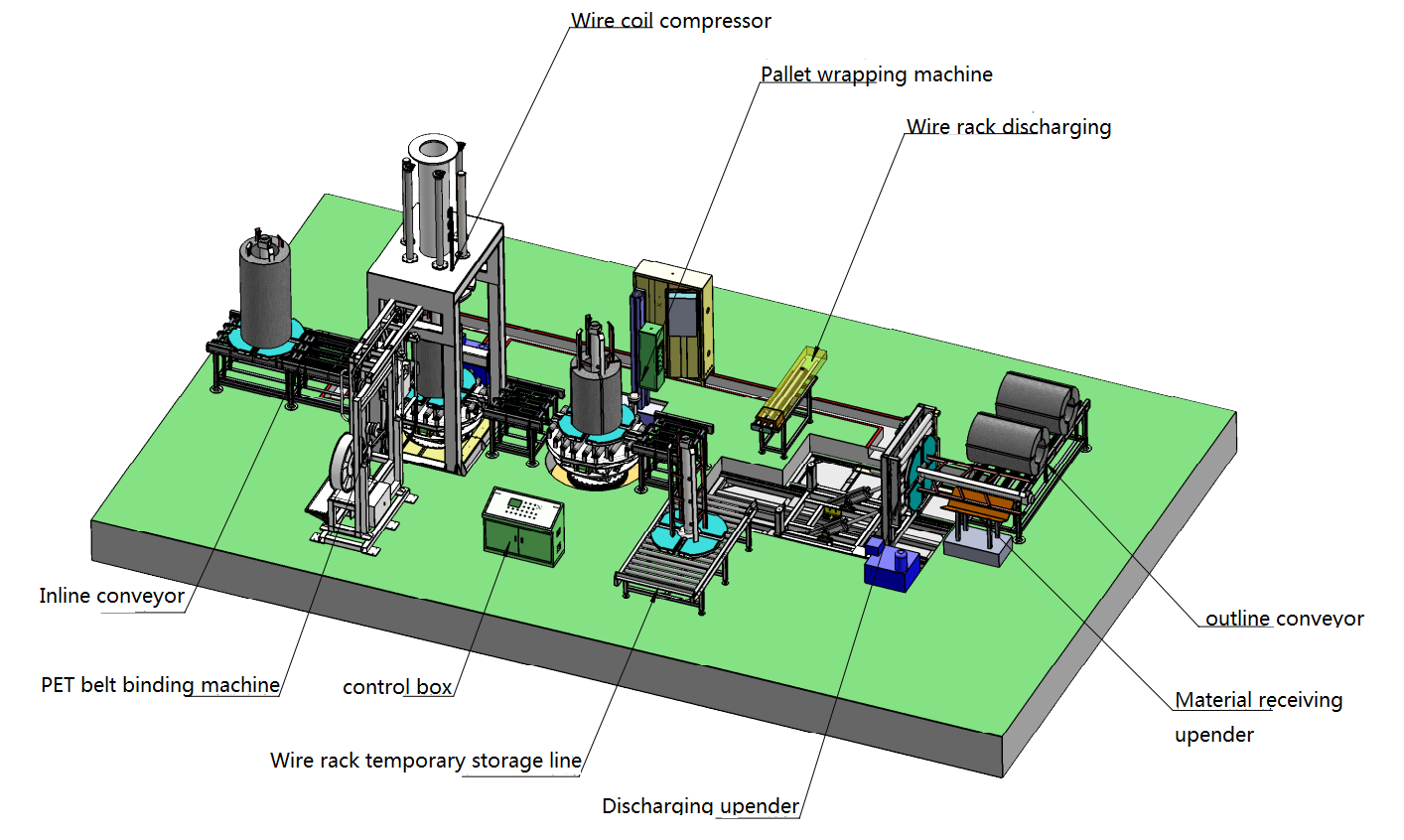I want to share my thoughts on a plan for a manual strapping steel wire coil press machine. This plan focuses on the needs of a client in Tashkent, Uzbekistan. I have spent many days thinking about how to meet those needs. I have also reflected on my past experiences with razor wire coils. I remember my first encounter with razor wire coils when I was younger. My family lived near a fenced area that used these coils for security. I felt both curious and cautious. I saw how important these coils were for safety. Now, I see a clear need to handle them in a more controlled and efficient way. That is why I am committed to designing this machine.

--
I will explain the background of the client. Then, I will go through the specific requirements. After that, I will talk about key points. Next, I will describe my proposed solution in detail. Finally, I will offer a conclusion. I want to use simple words and short sentences. I want each sentence to have a clear subject and direct meaning. I do not want to use complicated words. I will also provide images as placeholders. These images show where a real image would help explain each part of the machine. By sharing this plan, I hope to address each concern and show how this solution can work in a real factory setting.
1. Client Background
I received this inquiry from Mr. BAkramov. He represents a metal products company in Tashkent, Uzbekistan. This company makes Concertina razor wire coils. These coils often go on fences or walls for security. The coils help create barriers that keep out intruders. In my discussions with Mr. Akramov, I learned about his production line. I also learned about the challenges of compressing and strapping razor wire coils. The company needs a machine that can do this job effectively. They do not want a basket or any special container inside the machine. They want to place each coil manually, compress it, and then strap it.
The local conditions in Tashkent also influence the design. The work environment can vary in temperature and humidity. The operators often need simple controls. They also need a system that can handle changes in coil size. I wanted to keep those needs in mind because I have seen how razor wire coils can be tricky to manage. These coils have sharp edges. They can cause injuries if not handled correctly. My goal is to make something safe, efficient, and easy to maintain.
-
2. Specific Demand
Mr. Akramov told me about the main requirements. I will list them in a clear way:
- Equipment Type: A steel wire coil compressor with a manual strapping function.
- Coil Specifications:
- Diameter: 400 to 1200 millimeters.
- Inner Diameter: 200 to 1000 millimeters.
- Height Before Compression: 1.5 to 1.6 meters.
- Height After Compression: 0.9 to 1.0 meters.
- Compression Force: 5 tons.
- Operation Method: Manually load one coil at a time.
- Special Requirement: No built-in basket to collect coils.
I thought about these details. I realized that the machine must handle a large range of coil sizes. Also, it must provide enough force to compress these coils from about 1.6 meters in height down to about 1 meter or less. That means I need a stable structure and a reliable hydraulic system. I also saw that the operation must be simple. The person using the machine should not spend too much time on complicated steps. They should be able to place a coil, run the compression, do the strapping, and remove the coil without delay.

This approach demands a clear procedure. I decided to focus on a step-by-step design. Each step should be easy to understand. Each step should reduce the chance of the operator hurting themselves on the sharp edges. I also wanted to make sure the strapping can be done by hand. That might sound easy, but it requires good access to the coil. If the coil is compressed in the wrong way, it can shift. That can make it harder to attach straps. So, I spent time thinking about the best position for the coil. I also considered the best place for the operator to stand.
3. Key Points to Note
I identified several key points that guide the design and use of this machine:
- Safety: Razor wire coils pose a risk. They have sharp edges. The machine must keep the operator's hands away from danger zones. The safety guards and emergency stop features must be simple and clear. I also plan to include a way to hold the coil in place during compression. That way, there is less risk of the coil popping out.
- Ease of Operation: The operators will manually load each coil. They will also perform the strapping by hand. The machine's design must allow them to reach the coil safely. They should not need to struggle with tight spaces. They should not need special tools.
- Maintenance: The machine will run daily in a production line. The components must be robust. The hydraulic parts should be easy to check. The frame should be simple to clean. The strapping mechanism should not have too many moving parts.
- Adaptability: The coil sizes vary. The machine must compress coils with diameters from 400 to 1200 millimeters. The inner diameter can be from 200 to 1000 millimeters. That means the top plate and bottom plate must fit many sizes. The hydraulic system must deliver enough force to handle the widest coils.
I also remind myself that the environment in Tashkent can be warm. It can also be dusty in some areas. The machine must endure these conditions. I do not want delicate sensors. I want a simple control panel. I prefer a robust hydraulic cylinder that can withstand heat and dust. This approach suits a busy factory floor where staff handle many coils every day.

4. Proposed Detailed Solution
I will now outline the solution. I will break it down into several parts: the compression mechanism, the manual strapping mechanism, the support frame, and the control system. I will also describe the workflow from start to finish.
4.1 Compression Mechanism
I will use a hydraulic cylinder as the main source of compression. It will deliver about 5 tons of force. This amount of force will compress the coil from around 1.5 or 1.6 meters to around 0.9 or 1.0 meters. The cylinder will be mounted on a top plate. The bottom plate will serve as a fixed surface. The coil will sit between these plates. When I press a button, the top plate will move down. The coil will be compressed. Once it reaches the desired height, the operator can hold it in place while strapping.
The hydraulic pump will be a simple unit with a motor. A small control valve will let the operator move the cylinder up or down. I might include a pressure gauge. That way, the operator can see how much force is being applied. I want to keep the system as basic as possible. If there is a leak or a blockage, I want it to be obvious. This helps with quick maintenance. I have seen many hydraulic presses in factories. I know that a straightforward design is best when time is limited and staff need quick fixes.
4.2 Manual Strapping Mechanism
I plan to include a hand-operated strapping setup. Once the coil is compressed, the operator will reach around the coil. They will wrap a strap around it. Then, they will tighten the strap. They can use metal clips or a buckling method. After that, they can release the hydraulic pressure. The coil will stay compressed because of the strap. The coil can then be removed from the machine.
The reason for this manual approach is to keep costs low. Mr. Akramov mentioned that he wants a simple solution. Also, manual strapping gives the operator direct control. They can make sure the strap is tight and in the correct spot. This method is better when the coil dimensions vary a lot. An automatic strapping system might need complicated sensors and adjustments. A manual system allows the operator to adapt on the fly.
4.3 Support Frame
The frame will be made of sturdy steel. It must hold up against the 5-ton compression force. It must also remain stable over time. I plan to use thick steel beams for the side posts. The top plate and bottom plate must be reinforced. The welds must be strong. I also want to ensure that the entire structure can be bolted to the floor of the factory. That will improve stability. It will also reduce vibrations. If the machine is not stable, the coil could shift. That could damage the coil or injure the operator.
I remember a time when I worked with a smaller press in a workshop. The press was not bolted down properly. During compression, the press wobbled. That gave me a scare. I realized that safety depends on a stable frame. So, I always insist on robust construction.
4.4 Control System
The control system will be minimal. I will include a simple control panel with basic switches. There will be a start button for the hydraulic pump. There will be a lever or switch to move the cylinder up and down. There will be an emergency stop button. That button will shut off the hydraulic system if something goes wrong. I want the control panel to be at a safe distance from the coil. The operator should not have to stand right next to the coil while pressing the button.
Sometimes, I see more advanced panels with digital displays. Those can be good. But they might be harder to maintain if the environment is dusty. Also, the staff might prefer straightforward controls. I will keep the design as basic as possible. If the client wants more bells and whistles, we can add them later. The main goal is to compress and strap razor wire coils in a safe and efficient way.

4.5 Workflow
I want to break down the steps of operation. This helps me visualize how an operator will use the machine each day:
- Loading: The operator takes a single coil of razor wire and places it on the bottom plate. They must wear gloves and protective gear.
- Positioning: The operator adjusts the coil so that it is centered. The coil should not be leaning or off-balance.
- Compression: The operator activates the hydraulic system. The top plate moves down until the coil is at the desired height (around 0.9 to 1.0 meters).
- Strapping: The operator takes a strap and wraps it around the compressed coil. They attach the strap ends and tighten them by hand. They might use a manual tensioner.
- Release: The operator moves the top plate up by reversing the hydraulic control. The coil remains compressed because the strap is in place.
- Unloading: The operator removes the strapped coil from the machine. They place it aside. Then, they can load the next coil.
This sequence keeps things simple. Each coil is handled one at a time. The operator has clear control over the compression and strapping steps. The coil remains stable between the plates. That reduces the risk of it expanding or unwinding prematurely. The manual strapping step might require the operator to bend or reach around the coil. But with careful design, the space should be large enough for their hands. I have tested similar methods on other projects. They worked well when the staff followed proper safety measures.
4.6 Advantages of This Machine
I believe this solution has a few clear advantages:
- Efficiency: It compresses and straps the coil in one setup. That saves time compared to manual compression alone.
- Flexibility: It can handle different coil diameters and heights. The operator can adjust how far the top plate goes down. The manual strapping is also flexible.
- Safety: It keeps the coil stable while the operator works. It reduces direct contact with the razor wire. The steel frame shields some parts of the coil.
- Low Maintenance: The hydraulic system is a proven design. The manual strapping mechanism is simple. The overall design has fewer moving parts. That leads to fewer breakdowns.
- Cost-Effectiveness: It uses a basic hydraulic cylinder and a simple control panel. The manual strapping setup avoids the cost of an automatic strapping system.
I remember a time when I tested a similar machine in another facility. The workers were happy to see that they only needed one or two training sessions. After that, they could operate the machine with confidence. The manager told me it increased productivity because workers felt safe and the process was quick. I think that same approach will work well for this client in Tashkent.
4.7 References to Similar Machines
Mr. Akramov asked for some references. I showed him examples of other machines:
- Automatic steel wire coil rewinding and compression lines.
- Steel wire coil compression machines with a moving clamp.
- Steel wire coil compression machines combined with PET strapping.
Those examples show automated systems. But they also demonstrate the basic principle of compressing and strapping razor wire coils. I prefer to adapt those ideas to a manual strapping method. That is simpler and cheaper. Also, it matches the client's request. I think real-world photos and videos can help the client visualize. But for now:
5. Conclusion
I have outlined my plan for a manual strapping steel wire coil press machine for Mr. Akramov in Tashkent. I used a straightforward approach. I focused on a simple hydraulic compression mechanism, a manual strapping setup, a strong steel frame, and a minimal control panel. This design meets the client's needs and accounts for the sharp nature of razor wire coils. I considered safety, ease of operation, maintenance, and adaptability. I also drew on my experiences with similar machines and with razor wire coils. I believe this solution will compress coils from 1.5 or 1.6 meters down to 0.9 or 1.0 meters. It will let the operator strap each coil without needing an internal basket. It will handle the range of coil diameters and inner diameters that the client specified.
This report covers the main details of the proposed machine. I want to continue fine-tuning the technical specifications. I might also run tests with sample coils. I will update the client as I move forward. I see a clear path to a final design that fits the production line. I am eager to see this machine in use. I hope it brings greater efficiency and safety to the razor wire coil process in Tashkent.